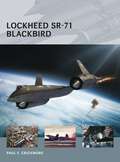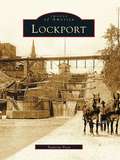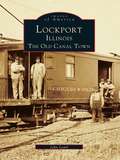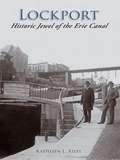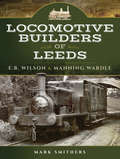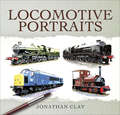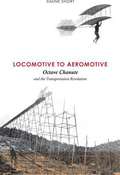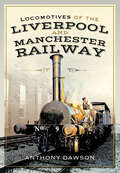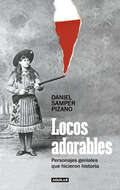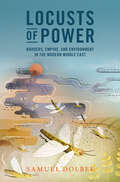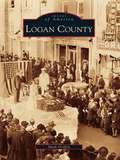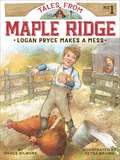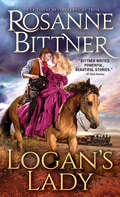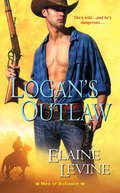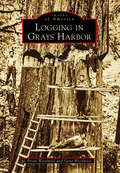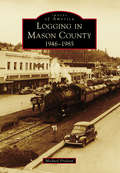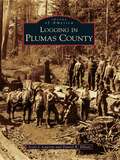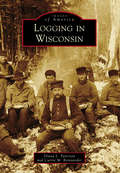- Table View
- List View
Lockheed SR-71 Blackbird
by Paul CrickmoreThe SR-71 has come to represent the very pinnacle of Cold War aircraft design - indeed, it has become an icon. Together with its predecessor, the A-12, the Blackbird was a giant leap into the technical unknown as the design employed many forms of new technology made necessary by the excesses of speed, altitude and temperature to which the aircraft was subjected. Throughout its 34-year Air Force career, the SR-71 proved itself to be the world's fastest and highest flying operational manned aircraft. It set a number of world records for altitude and speed, including an absolute altitude record of 85,069ft on 28 July 1974, and an absolute speed record of 2,193.2mph the same day. This truly was a unique and ground-breaking aircraft, whose fascinating design history is explored here in full and illuminated with photographs and detailed technical illustrations.
Lockheed SR-71 Operations in the Far East
by Chris Davey Paul CrickmoreEven before the first operational flight of the legendary Lockheed U-2 spy plane, aircraft design genius Kelly Johnson began work with his team at the company's "Skunk Works" plant on the type's replacement. The result was the SR-71. First deployed on March 9, 1968, this tri-sonic 'hotrod' flew its first operational sortie over North Vietnam just 12 days later. On that debut mission, the Blackbird overflew surface-to-air missile sites with complete impunity, collecting the detailed intelligence that led directly to the end of the siege of Khe Sanh in the process. Thereafter, the SR-71 roamed freely over areas previously denied to the vulnerable U-2, capturing photographic, radar and electronic intelligence. This book examines the immense impact this revolutionary aircraft had, not only on North Vietnam (Vietnam War, 1955-1975) but during the Cold War (1946-1991) as a whole, gathering information about the Soviet nuclear submarine fleet based in Vladivostok as well as the port's defenses, monitoring the actions of North Korea and flying four 11-hour, non-stop sorties into the Persian Gulf during the Iran-Iraq War in the late 1980s.
Lockport
by Paulette PecaLockport documents the creation and growth of a fascinating city that has played a vital role in American history. Here, the Erie Canal climbed the Niagara Falls escarpment and opened up the Great Lakes to East Coast commerce, a revolutionary achievement that brought unlimited hydroelectric power to western New York, fueling the early industrialization of Lockport. The city was at the forefront of technological and social innovation: the nation's first commercial telegraph line was laid here; the fire hydrant, the district central heating system, and the honeycomb automobile radiator were invented here; the first New York public school system was developed here; the first automatic voting machines were used here; and the National American Music Festival was created here. Lockport salutes the heroes and characters of Lockport's past and highlights the contribution of unsung generations of migrants-Irish, German, Polish and Italian-who built the Lock City's industries, homes, and reputation. It echoes the hum of thriving Main Street stores, bustling Market Street businesses, grand Locust Street homes, and flourishing fruit belt farms. Most of all, it rings with the ceaseless opening and closing of the famous locks that gave the city its name.
Lockport, Illinois: The Old Canal Town (Images of America)
by John LambThis new addition to the Images of America seriestraces the history of Lockport, Illinois, from theheight of its canal activity in the late 1860s to itsdecline as the lifeblood of the town in the early20th century. Lockport's story is revealed here inover 200 vintage photographs that trace the town'sprogress from its early days through the 1970s, whenthe canal reappeared as a recreational and tourist attraction. In Lockport, Illinois: The Old Canal Town, author John Lamb offers a rare glimpse into the lives of Lockport's founding fathers, as well as an in-depth look at the Demings family, whose fortunes and livelihoods depict the economic and cultural trends followed by many of Lockport's families. Lamb narrates this collection with an insightful text, providing many little-known facts about the town, the people, and the events that have shaped the history of this fascinating canal town.
Lockport: Historic Jewel of the Erie Canal
by Kathleen L. RileyFrom its beginnings in the early 19th century at the site where "art triumphed over nature," when the Erie Canal's Flight of Five locks was one of the wonders of the world, Lockport burst almost overnight into a thriving community that eventually outgrew the canal that gave it life. After many years of challenge and change, the city now looks to its glorious past to ensure its future.
Locomotive Builders of Leeds: E.B. Wilson & Manning Wardle
by Mark SmithersThe history of commercial railway locomotive manufacture in the Leeds is a fascinating story, covering a period of nearly two centuries, which commenced during the Napoleonic period and only came to an end in 1995. The two companies that most epitomized the formative years and period of consolidation of this this part of Britains industrial history were E.B. Wilson & Co (1846-59) and Manning Wardle & Co (1858-1927). The former manufacturer was well known for the Jenny Lind locomotives and their derivative designs used on several British main lines during the mid-nineteenth century. They proved to have a profound influence upon the work of other manufacturers for main line needs.The latter company was a builder of contractors and industrial locomotives, used worldwide, whose mainstream designs were likewise highly influential upon the work of neighboring manufacturers, constituting a sphere of locomotive production that lasted from before the Crimean War until after the end of the Second World War.In this new work, Mark Smithers draws upon a variety of sources, both documentary and illustrative, to arrive at an up-to date appraisal of the achievements of these companies during their respective periods of production, and their legacy to the greater sphere of British railway locomotive development.
Locomotive Portraits
by Jonathan ClayRailway art has existed as long as there have been Railways. Many famous names have included some aspect of railways in their paintings, notably Claude Monet and J M W Turner. This tradition has been kept alive by the formation in the UK of the Guild of Railway Artists, which now consists of over 200 artists, of which Jonathan Clay is one. Over the last few years, Jonathan has had many requests to produce his own book of pictures, and, having relented at last, this is the result.In order to save time for his first ever railway event in 1999, he painted a series of locomotive pictures without backgrounds, intending to add the scenery later. However, they sold so well, that they became the norm, and the series of 'Locomotive Portraits' was born.
Locomotive to Aeromotive: Octave Chanute and the Transportation Revolution
by Tom Crouch Simine ShortFrench-born and self-trained civil engineer Octave Chanute designed America's two largest stockyards, created innovative and influential structures such as the Kansas City Bridge over the previously "unbridgeable" Missouri River, and was a passionate aviation pioneer whose collaborative approach to aeronautical engineering problems helped the Wright brothers take flight. Drawing on a rich trove of archival material and exclusive family sources, Locomotive to Aeromotive is the first detailed examination of Chanute's life and his immeasurable contributions to the fields of engineering and transportation, from the ground transportation revolution of the mid-nineteenth century to the early days of aviation. Aviation researcher and historian Simine Short brings to light in colorful detail many previously overlooked facets of Chanute's life, in both his professional accomplishments and his personal relationships. Through the reflections of other engineers, scientists and pioneers in various fields who knew him, Short characterizes Chanute as a man who believed in fostering and supporting people who were willing to learn. This well-researched biography cements Chanute's place as a preeminent engineer, pioneer, and mentor in the history of transportation in the United States and the development of the airplane.
Locomotives of the Liverpool and Manchester Railway
by Anthony DawsonThe Liverpool & Manchester Railway was Britain’s first mainline, intercity railway; opened in 1830 it was at the cutting edge of railway technology. Engineered by George Stephenson and his team – John Dixon, William Allcard, Joseph Locke – the project faced many obstacles both before and after opening, including local opposition and the choice of motive power, resulting in the Rainhill Trials of 1829. Much of the success of the line can be attributed to the excellence of its engineering but also its fleet of pioneering locomotives built by Robert Stephenson & Co. of Newcastle. This is the story of those locomotives, and the men who worked on them, at a time when the locomotive was still in its infancy. Using extensive archival research, coupled with lessons learned from operating early replica locomotives such as Rocket and Planet, Anthony Dawson explores how the locomotive rapidly developed in response to the demands of the first intercity railway, and some of the technological dead ends along the way.
Locos adorables: Personajes geniales que hicieron historia
by Daniel Samper PizanoEl nuevo libro del periodista Daniel Samper nos descubre las extravagantes, originales y divertidas historias de vida de 10 personajes tan excéntricos como memorables No conoces a Ada Byron ni su gran hazaña en el mundo de la informática, pero quizá sí a su padre, Lord Byron. Tampoco sabes quién es el cocinero François Vatel, pero habrás oído hablar de los suntuosos banquetes que daba Luis XIV en su corte. Y por supuesto no te sonará el nombre de Annie Oakley, pero sí el de sus coetáneos Toro sentado y Buffalo Bill. Y es que detrás de cada gran hombre o mujer hay, sin duda, un loco adorable con una increíble vida que deberías conocer. Y Daniel Samper ha descubierto en este libro diez de las más fascinantes: François Vatel, Aimé Bonpland, Ada Byron, Temístocle Solera, Ezequiel Uricoechea, Annie Oakley, Graciela Olmos, Sidney Franklin, Hedy Lamarr y Mané Garrincha son los excéntricos e interesantísimos protagonistas de las historias injustamente desconocidas que componen estas páginas y que te enamorarán.
Locos lindos
by Daniel Samper PizanoEsta es la lista de locos lindos adorables que hicieron historia en actividades propias de su oficio Alrededor de ellos revolotean decenas de personajes y escenarios: el rey Luis XIV, Humboldt, el tenebroso Doctor Francia, Lord Byron, Verdi, Rufino José Cuervo, Búfalo Bill, el cacique Toro Sentado, Pancho Villa, Ernest Hemingway, figuras del partido Nazi alemán, artistas de Hollywood, la selva amazónica, la II Guerra Mundial, la guerra civil española, los chibchas, la reina Victoria, el rey Pelé y el Junior de Barranquilla.
Locus Amoenus: Gardens and Horticulture in the Renaissance (Renaissance Studies Special Issues #10)
by Alexander SamsonLocus Amoenus provides a pioneering collection of new perspectives on Renaissance garden history, and the impact of its development. Experts in the field illustrate the extent of our knowledge of how the natural world looked and how humans related to their environment. A ground-breaking collection of new perspectives on garden history Essays demonstrate the extent of our knowledge of how the natural world looked and how humans related to their environment The book's broad coverage includes botany and herbals, literary reflections of changing ideas of landscape and nature, and human's place within it Contributors come from a wide range of experts, including archaeologists, scholars and the librarian and archivist to the Royal Horticultural Society Reflects the growing emergence of this field, which has been assisted both by archaeology and ideas from green studies and environmental criticism Richly illustrated throughout
Locust: The Devastating Rise and Mysterious Disappearance of the Insect that Shaped the American Frontier
by Jeffrey A. LockwoodAs an entomologist, Lockwood (natural sciences and humanities, U. of Wyoming) found the explanation of the Rocky Mountain locust's extinction ecologically implausible, and reopened the case, at first for entirely objective reasons and using purely professional methods. But the story was embedded in the history of the US west and entangled with a number of controversies. Annotation ©2004 Book News, Inc. , Portland, OR (booknews. com)
Locusts of Power: Borders, Empire, and Environment in the Modern Middle East (Studies in Environment and History)
by Samuel DolbeeIn this highly original environmental history, Samuel Dolbee sheds new light on borders and state formation by following locusts and revealing how they shaped both the environment and people's imaginations from the late Ottoman Empire to the Second World War. Drawing on a wide range of archival research in multiple languages, Dolbee details environmental, political, and spatial transformations in the region's history by tracing the movements of locusts and their intimate relationship to people in motion, including Arab and Kurdish nomads, Armenian deportees, and Assyrian refugees, as well as states of the region. With locusts and moving people at center stage, surprising continuities and ruptures appear in the Jazira, the borderlands of today's Iraq, Syria, and Turkey. Transcending approaches focused on the collapse of the Ottoman Empire or the creation of nation states, Dolbee provides a new perspective on the modern Middle East grounded in environmental change, state violence, and popular resistance.
Lodore (Rediscovered Classics)
by Mary ShelleyAlso published as The Beautiful Widow, Mary Shelley&’s penultimate novel explores the web of relationships between three women bound together by the exacting Lord Lodore: Cornelia, Lodore&’s estranged wife, ruled by her mother and the norms of aristocratic society; Ethel, his daughter, raised in the wilderness of Illinois and utterly reliant on her father; and finally, the independent and highly educated Fanny Derham, the daughter of Lodore&’s childhood friend. Long considered the most Austen-like and socially oriented of Mary Shelley&’s novels, Lodore is an essential read for anyone seeking to understand this brilliant feminist writer.
Log Cabins and Outbuildings: A Guide to Building Homes, Barns, Greenhouses, and More
by The United States Department of AgricultureHomesteading is a lifestyle that people around the world gravitate toward—and for good reason. In today&’s high-stress world, many people dream of heading off to their own cabin in the woods or to their large rural oasis to escape the anxieties and complexities of daily life, to live in a more natural state. Others have embraced the agricultural lifestyle of farming as a career, serving as fundamental contributors to sustaining society. With this classic guide from the US Department of Agriculture (USDA), learn about the architecture of rural life and the design elements of these amazing structures. This manual, originally published and distributed in 1972, includes government-issued designs and requirements for log cabins, farmhouses, firepits and barbecues, greenhouses, storage sheds, stables, and more! Black-and-white diagrams and illustrations fill these pages, displaying the intricacies and dimensions of these incredible structures in their entirety. Brimming with ideas and inspiration, Log Cabins and Outbuildings is the perfect starting point for building your new rural retreat.
Logan County
by Mark GriffinAs one of Kentucky's oldest counties, Logan County has a colorful history. Residents found religion at the Red River Meeting House during the Second Great Awakening. However, the land once known as Rogue's Harbor has been wrought with lawlessness. Visitors to the county today can tour the bank in the county seat of Russellville where the infamous Jesse James started his robbing spree in 1868. Tourists and residents alike are regaled with stories of a dueling Andrew Jackson and countless corrupt elections. Four men went on to become governors, while a fifth attempt fell short despite an infamous campaign. All of these things are documented in Images of America: Logan County along with the less controversial events in history: the everyday farmers who raised their cash crop of tobacco to contribute to a growing community and the establishment of the most southwestern of the Shaker communities at South Union.
Logan Pryce Makes a Mess
by Grace Gilmore Petra BrownMeet Logan Pryce, an eight-year-old boy whose family hardships are made better by his small-town community in this start to a wholesome series that's like Little House on the Prairie for younger readers.It's 1892 in Maple Ridge, Illinois, and Logan Pryce is worried about his family. His dad, Dale, needs to find a new job because their farm is failing. He may even need to look for work in another city. Logan offers to earn some money by selling his latest invention, but his parents tell him not to worry and that everything will be fine. Then Dale is hired for a temporary job at the general store, and Logan can't wait to lend a hand! But his eagerness may cause his dad to lose the job he so badly needs. Can Logan's mistake be fixed in time? With easy-to-read language and illustrations on almost every page, the Tales from Maple Ridge chapter books are perfect for beginning readers.
Logan's Lady
by Rosanne BittnerTwo worlds in conflict Two untamed hearts intertwined One love worth fighting forWealthy Englishwoman Lady Elizabeth Baylor longs for adventure. She leaves for America full of hope, only to lose everything to a villain hiding treachery behind his smile. Lost in this strange and lawless land, Elizabeth vows to track down the man who did her wrong…but she can't do it alone. What she needs is someone hardened by the west and unflinching toward its dangers: notorious bounty hunter Logan Best.Ill-mannered and seemingly ruthless, Logan exorcises his dark past by throwing himself into his vengeful profession?hunting wanted men. There's nothing about the pampered Englishwoman that should call to him, and yet as their adventure takes them across the wild and treacherous west, the lonely hunter realizes he'll do anything to keep her safe…and defend his Lady to his final breath.A sweeping, emotional historical western romance, perfect for fans of Jo Goodman and Leigh Greenwood!
Logan's Outlaw
by Elaine LevineConfident and coolheaded, nothing shakes a Man of Defiance--except a woman he can't resist. . .Sarah Hawkins survived capture by the Sioux, but after her escape she faced public scorn. Now, she'll do anything to start over, and the dusty town of Defiance promises the anonymity and security she needs. Before she melts into the shadows, though, it's her mission to put a great injustice to rights, and that means jeopardizing her safety once more. But this time, she's not alone. Without meaning to, Sarah has fallen under the protection of Logan Taggert, a rough-and-tumble trader unused to caring for others--and yet unable to ignore the tempting, tenacious woman's plight. Though she refuses to trust him, Logan won't leave her side, keeping her one step ahead of danger. . .even as she takes hold of the very thing he never thought he'd risk: his heart. "A beautiful romance. . .that keeps the reader hooked from the first page to the last." --New York Times bestselling author, Catherine Anderson on Leah and the Bounty Hunter "Plenty of action makes this rough-and-ready Western one that fans are sure to enjoy." --Library Journal on Audrey and the Maverick
Logavina Street: Life And Death In A Sarajevo Neighborhood
by Barbara DemickLogavina Street was a microcosm of Sarajevo, a six-block-long history lesson. For four centuries, it existed as a quiet residential area in a charming city long known for its ethnic and religious tolerance. On this street of 240 families, Muslims and Christians, Serbs and Croats lived easily together, unified by their common identity as Sarajevans. Then the war tore it all apart. As she did in her groundbreaking work about North Korea, Nothing to Envy, award-winning journalist Barbara Demick tells the story of the Bosnian War and the brutal and devastating three-and-a-half-year siege of Sarajevo through the lives of ordinary citizens, who struggle with hunger, poverty, sniper fire, and shellings. Logavina Street paints this misunderstood war and its effects in vivid strokes--at once epic and intimate--revealing the heroism, sorrow, resilience, and uncommon faith of its people. With a new Introduction, final chapter, and Epilogue by the author
Logging in Grays Harbor
by Gene Woodwick Brian WoodwickGrays Harbor reigned supreme as the "Logging Capital of the World" for 150 years. Homesteaders became loggers and hired local Indians, who had logged the area's massive trees since ancient times. Sailors, too, were hired to rig spar trees. They fearlessly plied lumber schooners across destructive waters and carried timber products to the East Coast, South America, and other foreign ports. Over time, power saws replaced crosscut saws, and logging methods evolved. Today, loggers in Grays Harbor have begun a new phase of producing timber products that is built on a heritage of strong families, good citizens, and hard work.
Logging in Mason County: 1946-1985
by Michael FredsonIn 1946, the US Forest Service and Simpson Logging Company agreed to a sustained yield unit, cooperatively managing lands for 100 years for "community stability." Championed by USFS chief William Greeley and dubbed the "Sustained Steal" by detractors, the Shelton Cooperative Sustained Yield Unit nonetheless provided jobs for returning World War II veterans. Simpson Logging built the largest logging camp in the continental United States, Camp Grisdale, which had a two-room school and a two-lane bowling alley. Shelton and McCleary were saved from becoming ghosts towns, and downtown Shelton was modernized with a shopping center, parks, and schools. Mason County's Forest Festival was a weekend celebration for 30,000 visitors that included a parade and logging shows. As the only cooperative unit established in the United States, it attracted national attention, including TV personality Arthur Godfrey. In 1961, the movie Ring of Fire was filmed above Camp Grisdale. As World War II memories faded, logging practices were challenged by notions of wilderness and recreation. Improved equipment reduced the jobs, and when Simpson withdrew from the sustained yield agreement, employees were disenfranchised.
Logging in Plumas County
by Scott J. Lawson Daniel R. ElliottLocated within the northern Sierra Nevada mountain range, the forests of Plumas County were once seen as a source of endless timber. Lumber was needed during the Gold Rush for water flumes, mine timbers, and an array of buildings. While timber was abundant, the abilities of the early settlers to harvest, transport, and mill the logs were often very limited. Markets remained relatively local throughout the second half of the 19th century until the completion of the Western Pacific Railroad in 1909. This sparked a new rush of industry into the region. Vast tracts of untapped Plumas County timber were bought up by speculators, and many sawmills were erected. Logging in the western United States moved from animal power to steam engines to internal combustion in the space of about 50 years. While Plumas County's lumber industry was reflective of these developments, it also found its own identity as a timber-producing region that was nearly unequaled.
Logging in Wisconsin (Images of America)
by Carrie M. Ronnander Diana L. PetersonWisconsin was the perfect setting for the lumber industry: acres of white pine forests (acquired through treaties with American Indians) and rivers to transport logs to sawmills. From 1840 to 1910, logging literally reshaped the landscape of Wisconsin, providing employment to thousands of workers. The lumber industry attracted businessmen, mills, hotels, and eventually the railroad. This led to the development of many Wisconsin cities, including Eau Claire, Oshkosh, Stevens Point, and Wausau. Rep. Ben Eastman told Congress in 1852 that the Wisconsin forests had enough lumber to supply the United States “for all time to come.” Sadly, this was a grossly overestimated belief, and by 1910, the Wisconsin forests had been decimated. Logging in Wisconsin explores the 70 years when logging ruled the state, covering the characters who worked in forests and on rivers, the tools they used, and the places where they lived and worked.
